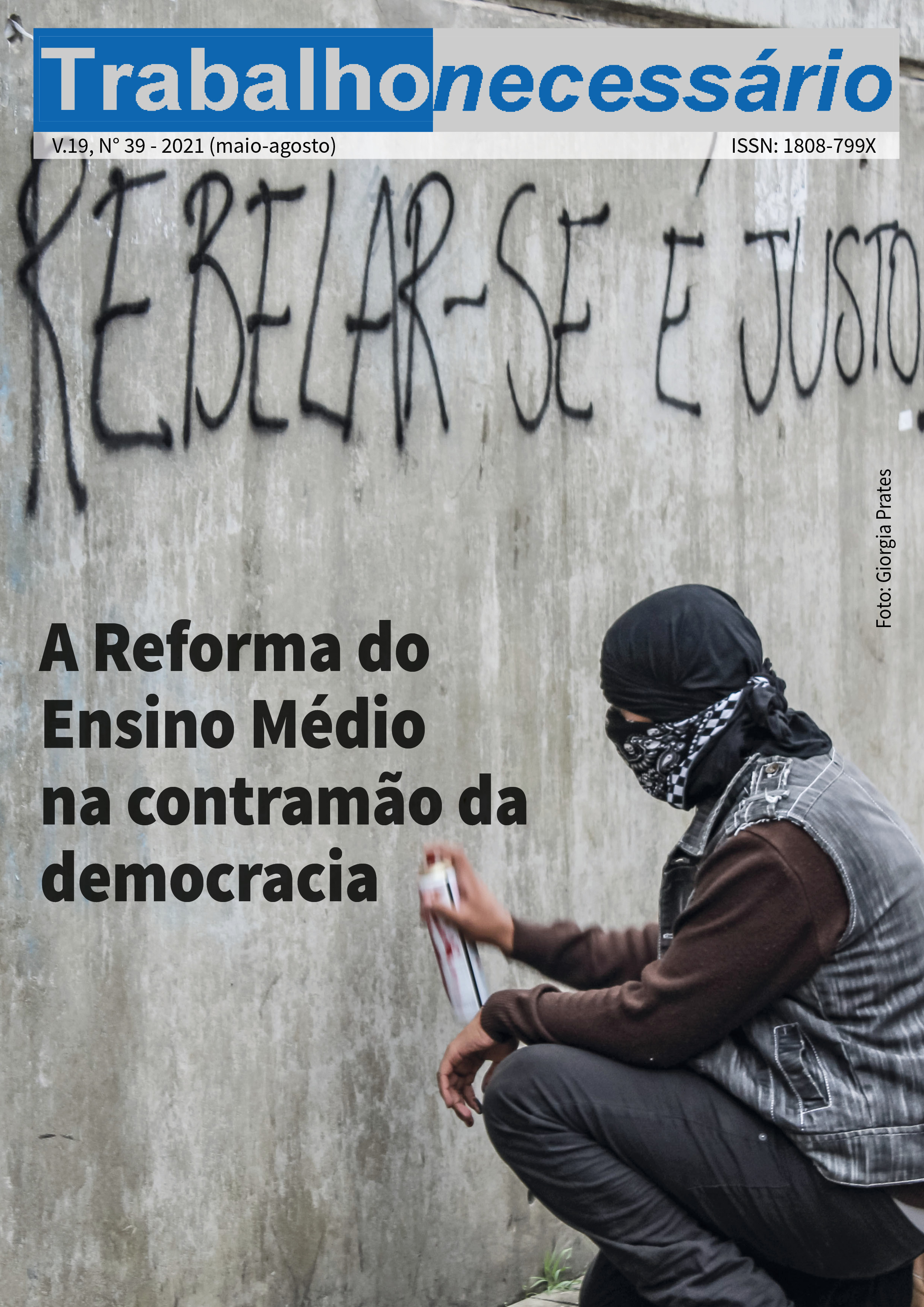A DISTOPIA DO MÉRITO: DESIGUALDADES ESCOLARES NO ENSINO MÉDIO BRASILEIRO ANALISADAS A PARTIR DO ENEM
DOI:
https://doi.org/10.22409/tn.v19i39.48130Abstract
Historically, it is possible to conceive at least three analytical properties that can define how educational inequalities are manifested within the education systems. Such properties are given by the notions of inclusion - which is related to the availability of educational assistance in the face of a provided social demand - in a specific historical and geographical context; progressivity - which involves an ability to include in this educational service the poorest population and in conditions of socioeconomic vulnerabilities, so that there is access, permanence and completion of schooling for all social groups. And finally, by the notion of specification - which involves some type of internal organization of the school offer marked by the institutional and / or formative subdivision of the system, which is capable of directing, directly or indirectly, as chances of access to higher or higher school trajectories. less prestige and social appreciation in this same society. The rate can affect educational inequalities as it produces differentiations and hierarchies in the allocation of scholars from different social classes / socioeconomic groups within the educational system. Based on these analytical properties, we seek to analyze the phenomena that have marked the expansion of school attendance in Brazilian high school in recent years. We try to show that this expansion deserves more in-depth analyzes, given its discontinuities and ambiguities, since high school remains one of the most challenging stages in the search for democratization of the educational system in the country. One of the limitations that have been historically and uninterruptedly in the country, is related to the scarcity of data and information about this phenomenon. Against this background, the main objective of this study was to analyze the socioeconomic, cultural, work-related profile and trends observed in the school trajectories of students who passed through Brazilian high school in the historical series from 1998 to 2014. The research was carried out predominantly using data from the ENEM socioeconomic questionnaire, in addition to other census and / or sample data. The results of the work show that the movement for inclusion and progressivity - verified also by other researches - did not translate into the democratization of school opportunities at this stage. Our progression that despite important changes related to the noticeable greater access and conclusion at this stage, there are historical patterns of supply in the educational system that act as mechanisms for the Brazilian production of school inequalities, which can be perceived through curricular, formative and institutional differentiations.
Downloads
Published
How to Cite
Issue
Section
License
Copyright (c) 2021 Revista Trabalho Necessário

This work is licensed under a Creative Commons Attribution 4.0 International License.
DECLARAÇÃO DE DIREITO AUTORAL
Esta Revista é licenciada por Creative Commons (Atribuição 4.0 Internacional).
O processamento e a publicação dos trabalhos não implicam em nenhum tipo de custo para os autores.
Os autores têm autorização para assumir contratos adicionais separadamente, para distribuição não-exclusiva da versão do trabalho publicada nesta revista (ex.: publicar em repositório institucional ou como capítulo de livro), com reconhecimento de autoria e publicação inicial nesta revista.
DECLARACIÓN DE DERECHO AUTORAL
Esta revista es licenciada por Creative Commons (Atribuición 4.0 Internacional).
Lo procesamiento y la publicación de los trabajos no implica en ninguno tipo de costo para los autores.
Los autores tienen permiso para asumir contratos adicionales separadamente, para distribución no exclusiva de la versión del trabajo publicada en esta revista (ej.: publicar em repositorio institucional o como capítulo de un libro), con reconocimiento de autoria y publicación inicial en esta revista.
DECLARATION OF COPYRIGHT
The Journal is licensed by Creative Commons (Attribution 4.0 International).
Processing and publication of the work do not imply any cost to the authors.
The authors are allowed to take on additional contracts separately, non-exclusive distribution of the version of the paper published in this journal (ex.: publish in institutional repository or as a chapter of a book), with an acknowledgment of its initial publication in this journal.
Termo de Transferência de Direitos Autorais
Como condição para a submissão, os autores devem declarar a autoria do trabalho e concordar com o Termo de Cessão de Direitos Autorais, marcando a caixa de seleção após a leitura das cláusulas.
- Declaro que participei da elaboração do referido artigo / resenhas ou de outros elementos para a composição das seções da Revista TrabalhoNecessário-TN, em parte ou no todo; que não omiti qualquer ligação ou acordo de financiamento entre os autores e instituições ou empresas que possam ter interesses na publicação desse trabalho;
- Declaro tratar-se de texto original, isento de compilação, em parte ou na íntegra, de minha autoria ou de outro(os) autor (es) e que segui(mos) as diretrizes (normas e instruções) para os autores;
- Declaro que o texto não foi enviado a outra revista (impressa ou eletrônica) e não o será enquanto a possibilidade de sua publicação esteja sendo considerada pela Revista Trabalhonecessário;
- Declaro que transfiro os direitos autorais do trabalho especificado para a Revista TrabalhoNecessário, comprometendo-me a não reproduzir o texto, total ou parcialmente, em qualquer meio de divulgação (ex.: publicar em repositório institucional ou como capítulo de livro), impresso ou eletrônico, sem prévia autorização dessa Revista, com reconhecimento de autoria e publicação inicial nesta revista.
- Declaro que tenho conhecimento que a cessão do texto à Revista TrabalhoNecessário-TN é gratuita e, portanto, não haverá qualquer tipo de remuneração pela sua utilização.








